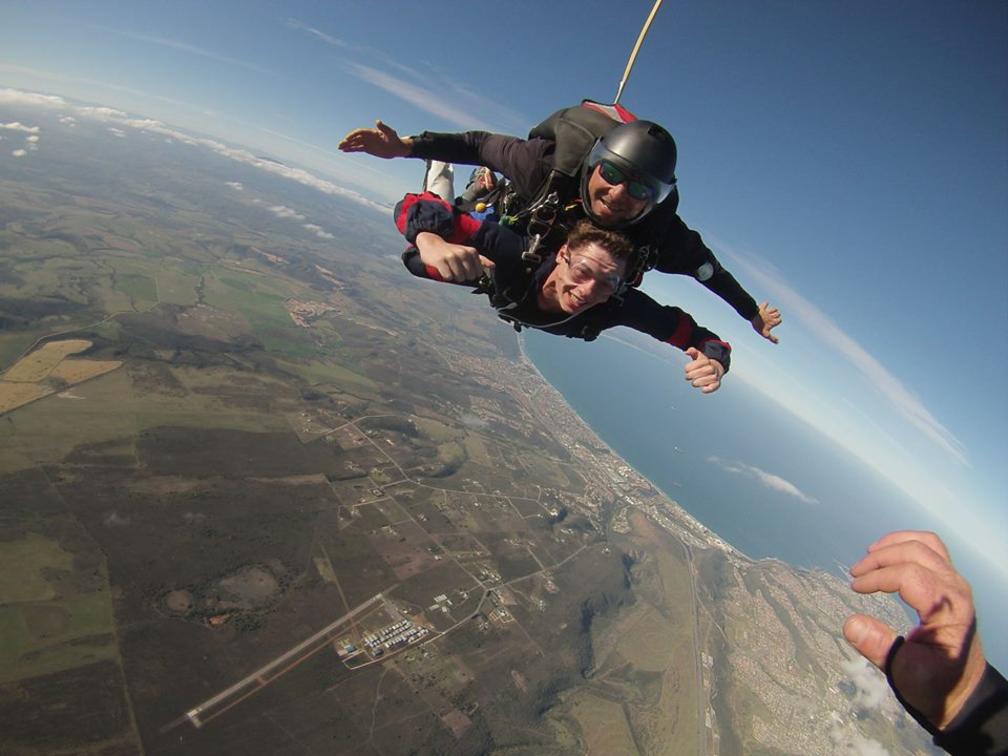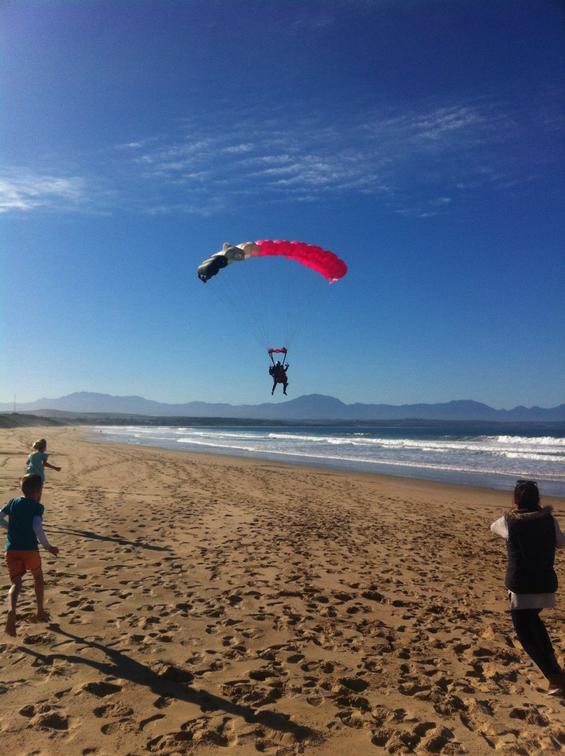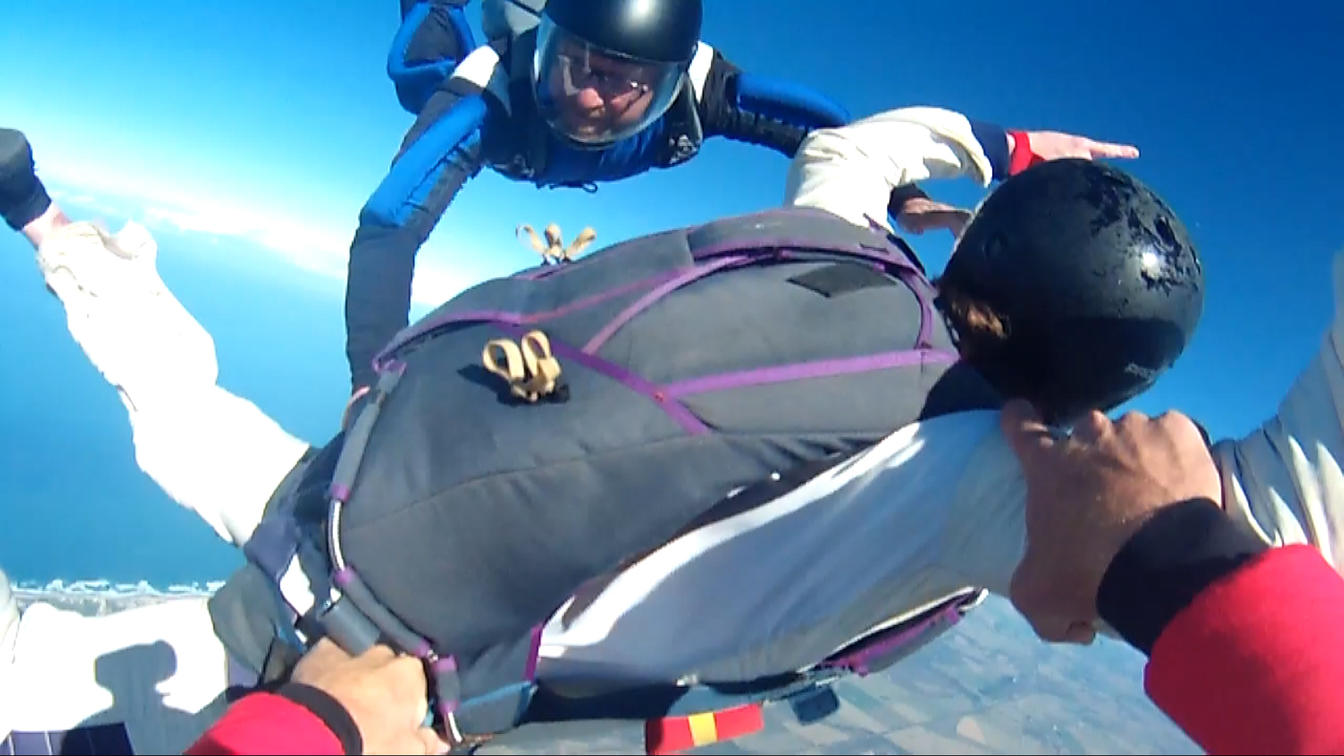Skydive Mossel Bay

Tandem Skydive from 10,000 feet
Tandem jumps are a very popular way to make your first jump. A tandem allows you to experience, first-hand, the thrills of skydiving without the full formal training program. The tandem skydive only requires about 30 minutes of ground preparation.
Tandem jumping, by definition, consists of an experienced jumper called a “Tandem Instructor” and the passenger. The tandem instructor rides on the back and wears an extra-large parachute system capable of carrying weights of up to 500 pounds; easily able to safely suspend two people. The passenger (or tandem progression student) wears a specially designed harness that attaches in four points to the front of the tandem instructor. A tandem freefall generally lasts between 30 and 50 seconds, followed by a four minute parachute ride to the ground.
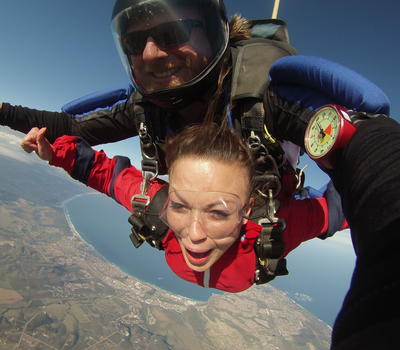
Tandem skydive from 12,000 feet
This is the same as the tandem skydive from 10,000 feet except you go higher. You will exit the aircraft at 12,000 feet and freefall for a 6-8 seconds longer.
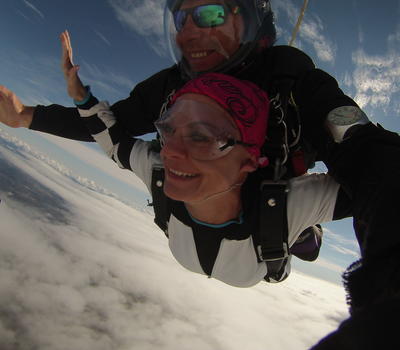
Tandem video & photos
Handycam Video + photos + certificate of your tandem jump on a custom flash drive. The Tandem Instructor wears GoPro cameras on his arm and shoots the whole experience from the ground, in the plane, freefall, under parachute and the landing. It includes an edited video of your skydive together with interviews and plenty of awesome photos.
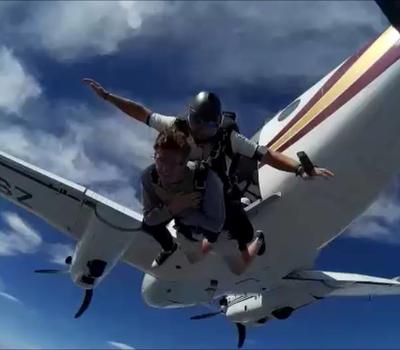
Outside camera of your tandem skydive
Similar to the handy cam video and photos except that a third person follow you out the aircraft. taking footage from a different perspective.

Tandem Beach Landing
This is an additional option to your tandem skydive. The landing area is usually at the airfield outside the Skydive Mossel Bay hangar. As an added option you can select a beach landing when the instructor will land on Diaz Beach. You will be collected on the beach and returned to the airfield. Beach landings are weather dependent.
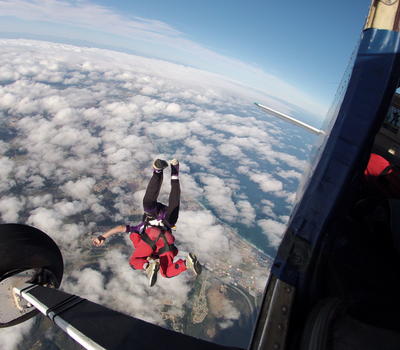
Tandem "Extreme Ride"
This is for the adventurous souls. Spice up your tandem skydive by asking your tandem instructor to include flips and turns when you exit the aircraft and a roller-coaster style parachute flight!

Accelerated Freefall Course (AFF)
The AFF program will give you a true taste of modern sport skydiving. It consists of a ground school of about 8 hours and the student will be doing a 50 second freefall (that’s right!) on his/her very first jump.
The student will exit the aircraft at 10,000-12,000 feet along with two AFF instructors who will assist the student during freefall. The instructors maintain grips on the student from the moment they leave the aircraft until opening, assisting the student as necessary to fall stable, perform practice ripcord pulls, monitor altitude, etc. The student then pulls his/her own ripcord at about 4000 ft.
The official PASA AFF program is a 10 level program. Levels 1, 2, & 3 require two AFF instructors to accompany the student. These dives concentrate on teaching basic safety skills such as altitude awareness, body position and stability during freefall and during the pull sequence and most importantly- successful ripcord pull. On level 3, the instructors will release the student in freefall for the first time, to fly completely on their own.
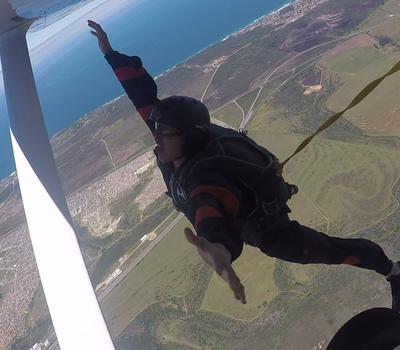
Static Line Course
The student gets around 6 hours of ground training and is then taken to an altitude of about 3500 feet for the jump. The jump itself consists of a simple “poised” exit from the strut of a Cessna aircraft. As the student falls away from the plane, the main canopy is deployed by a “static line” attached to the aircraft. The student will experience about two to three seconds of falling as the parachute opens.
Subsequent jumps require about 15 minutes of preparation. After 3 good static line jumps, the student will be trained to pull their ripcord for themselves. The student then does 5 more static line jumps where they demonstrate this ability by pulling a dummy ripcord as they leave the plane (the static line is still initiating the deployment). The student is then cleared to do their first actual freefall.
The first freefall is a 3 second delay freefall, where the student initiates the pull sequence immediately upon leaving the aircraft. Next is a 5 second delay jump. Subsequent jumps go to progressively higher altitudes with longer delays.


